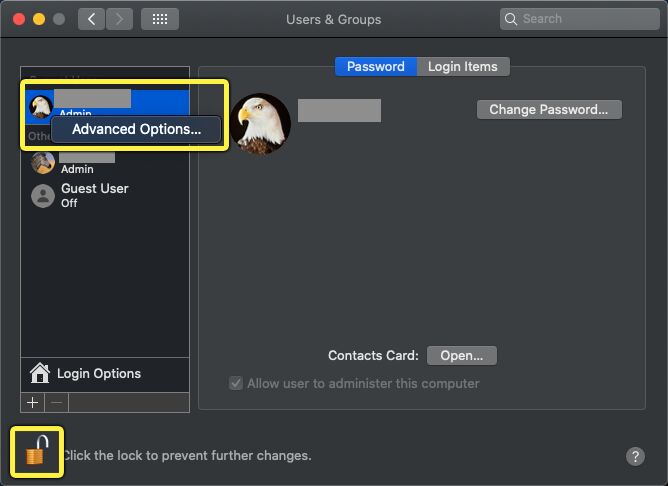
- #MAC CHANGE TERMINAL EMULATOR PREFERENCES TO ALLOW LOGIN SHELL HOW TO#
- #MAC CHANGE TERMINAL EMULATOR PREFERENCES TO ALLOW LOGIN SHELL MAC OS#
- #MAC CHANGE TERMINAL EMULATOR PREFERENCES TO ALLOW LOGIN SHELL MANUAL#
- #MAC CHANGE TERMINAL EMULATOR PREFERENCES TO ALLOW LOGIN SHELL PASSWORD#
Double click on the tool named Directory Utility. After struggling getting the correct file or folder path I’m usually greeted with No such file or directory reminding me that the command line doesn’t like spaces in file and folder paths. I even followed youtube videos and still no joy.

Today’s hint is for those of you who, like me, use Terminal often and occasionally have a need to do things there as the root user. Some of the files and directories are the same as those which I see when I perform an ls on / dir in Terminal, but most other directories like /usr, /bin, etc are not visible. The directory you switched to will be reflected in the command line. The process of setting environment variables in the Terminal will be familiar to those with experience with Linux or UNIX.

Many years ago, I could find my way around DOS, albeit I'm a bit rusty.
#MAC CHANGE TERMINAL EMULATOR PREFERENCES TO ALLOW LOGIN SHELL PASSWORD#
Just type in your password and press Enter.You will now be asked to enter a password for the root user account. Type the following command in terminal and hit return. Now, you need to type: sudo passwd -u root. To make them visible you need to show the hidden files. We're getting ahead of ourselves, however. Copyright © 2017 - 2019 TheMacBeginner - All Rights Reserved || Sitemap.
#MAC CHANGE TERMINAL EMULATOR PREFERENCES TO ALLOW LOGIN SHELL HOW TO#
Here is how to cd (change directory) into an external drive using Terminal on Mac computers. Imagine you are going to begin an entirely new coding project. Additionally, using the generic / path will always go to the root directory, even if someone renamed “Macintosh HD” to something else, making it universal across all Macs. Specify the name of the directory (folder) you want to create just after it. The login window, which you can access by logging out of your account or by using the fast user switching icon on your menu bar, will show a new “Other…” option. On Macs, all connected drives (including hidden drives) are mounted/located under the /Volumes directory. How to make a directory/folder using Mac Terminal - … Login shell vs non-login shell. You can use this to toggle back and forth between two directories. Reproduction without explicit permission is prohibited. Why delete file command line feature is important. It is the command that helps you enable the root user account on your Mac.It should then ask you to input your current user password. Open your Mac’s Spotlight by clicking the menu icon in the upper-right corner of the screen.
#MAC CHANGE TERMINAL EMULATOR PREFERENCES TO ALLOW LOGIN SHELL MAC OS#
Terminal was used by Apple as a showcase for macOS graphics APIs in early advertising of Mac OS X, offering a range of custom font and coloring options, including transparent backgrounds.However an even faster way to go there directly is to skip the directory argument and just use document.getElementById("comment").setAttribute( "id", "ae86f036c30c0e5824cba5af962e651d" ) document.getElementById("ef90286dcd").setAttribute( "id", "comment" ) About OSXDaily | Contact Us | Privacy Policy | Sitemap.


#MAC CHANGE TERMINAL EMULATOR PREFERENCES TO ALLOW LOGIN SHELL MANUAL#
These include the ability to use the standard macOS Help search function to find manual pages and integration with Spotlight. Terminal includes several features that specifically access macOS APIs and features. These settings do not alter the operation of Terminal, and the xterm settings do not match the behavior of xterm. Available options are ansi, dtterm, nsterm, rxvt, vt52, vt100, vt102, xterm, xterm-16color and xterm-256color, which differ from the OS X 10.5 (Leopard) choices by dropping the xterm-color and adding xterm-16color and xterm-256color. The preferences dialog for Terminal.app in OS X 10.8 (Mountain Lion) and later offers choices for values of the TERM environment variable. The user can choose other shells available with macOS, such as the KornShell, tcsh, and bash. Īs a terminal emulator, the application provides text-based access to the operating system, in contrast to the mostly graphical nature of the user experience of macOS, by providing a command-line interface to the operating system when used in conjunction with a Unix shell, such as zsh (the default shell in macOS Catalina ). Terminal originated in NeXTSTEP and OPENSTEP, the predecessor operating systems of macOS. Terminal ( Terminal.app) is the terminal emulator included in the macOS operating system by Apple. Terminal 2.2 running the top program under macOS


 0 kommentar(er)
0 kommentar(er)
